This article was co-authored by Justin Barnes and by wikiHow staff writer, Christopher M. Osborne, PhD. Justin Barnes is a Senior Home Care Specialist and the Co-Owner of Presidio Home Care, a family-owned and operated Home Care Organization based in the Los Angeles, California metro area. Presidio Home Care, which provides non-medical supportive services, was the first agency in the state of California to become a licensed Home Care Organization. Justin has over 10 years of experience in the Home Care field. He has a BS in Technology and Operations Management from the California State Polytechnic University - Pomona.
There are 13 references cited in this article, which can be found at the bottom of the page.
This article has been viewed 5,759 times.
Opening a retirement home is typically a labor of love, not a path to big profits, though you might be able to make $100,000 USD per year under ideal circumstances.[1] To get started helping seniors in need, figure out what level of care you want to provide—for this article, we’ll equate “retirement home” with “assisted living facility.” After that, you can get to work on setting up your business, finding the right facility and staff, and welcoming your first group of residents.
Steps
Choosing the Care Level You’ll Provide
-
1Open an assisted living facility to support semi-independent residents. If your idea of a “retirement home” involves helping senior residents with their daily needs but not providing round-the-clock medical care, an assisted living facility (or “supportive housing facility”) is the way to go.[2] It’s also the primary focus of the remainder of this article. Assisted living facilities typically don’t provide direct medical care, but do include services like the following:[3]
- Providing 24-hour supervision and security.
- Preparing and serving all meals.
- Giving prescribed medications.
- Offering personal care assistance like bathing, dressing, and using the toilet.
- Providing or assisting with housekeeping and laundry.
- Setting up social and recreational activities for residents.
-
2Operate a nursing home to provide ongoing medical care to residents. Nursing homes, which are also called “skilled nursing facilities” and “long-term care homes,” have nurses and other medical professionals on staff at all times to offer care.[4] Nursing home residents have moderate to significant medical needs that may require frequent to nearly-constant attention.[5] Because of this higher level of care, nursing homes have higher operating costs and regulatory requirements than assisted living facilities.[6]
- If this is the type of “retirement home” you’re looking to open, check out this wikiHow article: How to Open a Nursing Home.
Advertisement -
3Start a independent living facility to provide housing but not ongoing care. In these types of facilities, residents live essentially independently—they typically provide their own meals and manage their own medical and personal care. Your primary responsibility is to provide a safe, healthy, and happy living environment for the residents while letting them live their lives as they see fit.[7]
- This type of facility typically has less government regulation, but you’ll almost certainly still need to be licensed to operate one.
- While the remainder of this article focuses more on assisted living facilities, much of the advice (especially in regards to setting up a new business) is still useful if you’re looking to open an independent living facility.
- It’s a bit confusing, but these facilities are typically known as “retirement homes” in Canada, while that term is usually more associated with assisted living facilities in the U.S.[8]
Setting up Your Business and Facility
-
1Research the market and the regulatory requirements in your area. In truth, this needs to be one of the first steps when you start any type of business. Do simple research through internet searches, but also examine government publications on things like demographics, economic activity, and business regulation.[9] Find answers to questions like the following:[10]
- How many assisted living facilities are there in the area? Are the facilities at, near, or over capacity? Is there a need for more facilities? What is the growth potential for the number of seniors in the area?
- What is the overall economic climate in the area? What level of care or type of facility can your target group of seniors typically afford? How much do your competitors charge?
- How easy or difficult do similar businesses find it to navigate all the regulatory hurdles involved?
-
2Estimate your startup and initial operating costs. Use your research on the local market and existing assisted living facilities to guide these estimates. Your startup estimate will be a big number—maybe $500,000 USD or more—but it’s important to give yourself a realistic view of what you’ll need to succeed.[11] Here’s a basic example for a 20-bed assisted living facility:[12]
- Purchase of an existing facility for $2 million USD (20% down): $400,000.
- Small improvements to existing furnishings and equipment: $25,000.
- Working capital (60 days’ worth of operating expenses, including things like salaries, food, medical and home supplies, insurance, and taxes): $100,000.
- Total startup estimate: $525,000 USD.
-
3Fold your financial research into a more complete business plan. A well-done business plan is a must if you want to get a loan to start your assisted living facility, and it’s a good idea to do one in any case. While there’s no set format or length for a business plan, it should probably end up in the 10-30 page range and include sections like the following:[13]
- Executive Summary: sum up what your business is and why it will succeed.
- Company Description: explain the structure and function of your business.
- Market Analysis: describe your target market and competition.
- Organization and Management: identify the facility’s key leadership.
- Services Offered: lay out what your facility will provide to residents.
- Marketing Strategy: explain how you’ll attract residents.
- Funding Request: list the amount and type of funding you need.
- Financial Projections: offer an outlook for the next five years.
- Appendix: include supporting documents to bolster your case.
-
4Use your business plan to obtain funding from banks or investors. Since assisted living facilities have high startup costs, you probably won’t be able to rely on self-funding (using your own savings) to get your business started. Instead, rely on your business plan to whet the appetites of potential lenders and investors like the following:[14]
- Banks or credit unions for a small business loan.
- Individual investors to provide venture capital.
- Small Business Administration (SBA)-backed loans or investment programs if you’re having trouble getting traditional loans or investments (in the U.S.).
-
5Create an LLC to protect your personal finances. As its name indicates, a limited liability company (LLC) limits your personal financial liability in regards to the operation of your business. Starting an LLC is fairly straightforward but has many state-specific elements, so you may want to consult an attorney who specializes in LLCs in your area. Here’s the basic process:[15]
- Come up with a unique name for your LLC and register it with your state.
- Choose a management structure and name a “registered agent” for your LLC.
- Register for a tax number and bank account for your LLC as required.
- File an operating agreement that defines the specific “rules” for your LLC.
- NOTE: Outside of the U.S., work with an attorney to form a similar business entity that will limit your personal financial liability.
-
6Buy, renovate, or build a facility that meets all legal requirements. Anything from a large home to a closed school building can serve as an assisted living facility—a former apartment building might be a good choice, for example. Whatever type of building you choose, it has to have enough guest rooms, restrooms, and space for things like meal prep and social activities to suit your plans for the facility. It also has to meet whatever legal and licensing requirements are in place in your area.[16]
- In Texas, for example, the facility has to pass a “Life Safety Code” inspection to legally begin operation.[17]
- Make sure to factor in facility expenses like upkeep costs, utility bills, property taxes, and expansion plans when making your business plan.
-
7Apply for the licenses required to operate a facility in your area. While they’re typically isn’t as much “red tape” involved as there is with a nursing home, opening an assisted living facility certainly requires its fair share of jumping through bureaucratic hoops. You’ll almost certainly have to apply for and receive an operator’s license, for example.[18] Check the website for the licensing authority in your area—such as the HHS in Texas or the DSS in California—to get an idea of where to start.[19]
- It can definitely be worth your while to work with a business attorney who has experience in the retirement home field.
-
8Become a certified facility administrator, or hire one. Like the other licenses and certifications you’ll need, this certification varies by location.[20] In places like California, though, your business must have a certified facility administrator in order to operate legally as a retirement home. You may need to take classes, pass exams, and pay a range of fees to earn this type of certification, so figure out what’s required in your area early in the process.[21]
- To become a certified facility administrator in California, for example, you must take an 80-hour course, get at least 70% on a 100-question test, and have some combination of higher education and relevant job experience, among other requirements.
Opening for Business
-
1Hire and train an exceptional staff for your facility. The reputation your facility earns will greatly depend on the reputation of its staff—the people who interact with residents and their loved ones on a daily basis.[22] Start your search for a team early in the process so you have more time to find and hire a group of caring and dedicated professionals. Make sure they have—or get—the necessary training and share your vision for resident care.[23]
- Your staffing needs will vary based on the size and specifics of your facility, but you’ll likely employ some combination of the following: an administrator (if it's not you); administrative staff; registered nurses (RNs) or, more commonly, certified nursing assistants (CNAs); aides; housekeepers; custodians; and dining staff members.
-
2Develop a brand identity that sets your facility apart. Ask yourself this: why should potential residents and their loved ones choose you, the new kid on the block, instead of established assisted living facilities in the area? What makes you special? Your answers to these questions should influence everything from your advertising strategy to your facility decor choices.[24]
- Many assisted living facilities aim to build their brand around the idea that “We treat our residents like family.” Set your facility apart by tweaking the “family” branding strategy to target a specific priority, such as keeping residents active and engaged: “Friendly people and fun times in a family setting.”
- If you’re trying to prioritize your local ties with your branding, you might decorate the facility with vintage sports and band gear from the local high school.
-
3Focus your advertising to reach your target audience. Keep in mind that your target audience is not just potential residents but also their loved ones. Therefore, you might use local TV, radio, and newspaper advertising to reach potential residents, and a social media presence to engage with their middle-aged children. Maintain your brand identity throughout, but adjust your advertising to suit that specific segment of your target audience.[25]
- For example, your TV and radio ads might emphasize fun activities and affordability, while your social media presence might focus on safety and quality of care.
-
4Select your initial group of residents thoughtfully. It may seem distasteful to talk about being “choosy” in regards to seniors who need help living with dignity, and the point here isn’t to label potential residents as “good” or “bad” options. But it’s also a fact that you can’t admit every person in need into your new facility, so do consider how the particular residents you admit will—along with the initial staff you’ve hired—go a long way toward setting the tone for your facility.[26]
- For example, due to average lifespan differences, assisted living facilities often have 2-4 times more female residents than male residents, so including 3 male residents in your first group of 8 admissions might give you a reputation as more of a gender-balanced facility.[27]
References
- ↑ https://www.retirefearless.com/post/how-much-money-can-you-make-owning-an-assisted-living-facility
- ↑ http://sbs-spe.feddevontario.canada.ca/how-start-seniors-care-business-ontario
- ↑ https://www.nia.nih.gov/health/residential-facilities-assisted-living-and-nursing-homes
- ↑ http://sbs-spe.feddevontario.canada.ca/how-start-seniors-care-business-ontario
- ↑ Justin Barnes. Senior Home Care Specialist. Expert Interview. 6 March 2020.
- ↑ https://www.nia.nih.gov/health/residential-facilities-assisted-living-and-nursing-homes
- ↑ https://www.nia.nih.gov/health/residential-facilities-assisted-living-and-nursing-homes
- ↑ http://sbs-spe.feddevontario.canada.ca/how-start-seniors-care-business-ontario
- ↑ Justin Barnes. Senior Home Care Specialist. Expert Interview. 6 March 2020.
- ↑ https://www.sba.gov/business-guide/plan-your-business/market-research-competitive-analysis
- ↑ https://www.sba.gov/business-guide/plan-your-business/calculate-your-startup-costs
- ↑ https://seniorcaremike.com/how-much-money-to-start-assisted/
- ↑ https://www.sba.gov/business-guide/plan-your-business/write-your-business-plan
- ↑ https://www.sba.gov/business-guide/plan-your-business/fund-your-business
- ↑ https://residentialassistedlivingacademy.com/how-to-start-a-residential-assisted-living-home/
- ↑ https://assistedlivingeducation.com/10-steps-to-open-an-rcfe-in-california/
- ↑ https://www.hhs.texas.gov/doing-business-hhs/provider-portals/long-term-care-providers/assisted-living-facilities/how-become-alf-provider
- ↑ Justin Barnes. Senior Home Care Specialist. Expert Interview. 6 March 2020.
- ↑ https://www.hhs.texas.gov/doing-business-hhs/provider-portals/long-term-care-providers/assisted-living-facilities/how-become-alf-provider
- ↑ Justin Barnes. Senior Home Care Specialist. Expert Interview. 6 March 2020.
- ↑ https://assistedlivingeducation.com/10-steps-to-open-an-rcfe-in-california/
- ↑ Justin Barnes. Senior Home Care Specialist. Expert Interview. 6 March 2020.
- ↑ https://assistedlivingeducation.com/10-steps-to-open-an-rcfe-in-california/
- ↑ https://residentialassistedlivingacademy.com/how-to-start-a-residential-assisted-living-home/
- ↑ https://residentialassistedlivingacademy.com/how-to-start-a-residential-assisted-living-home/
- ↑ https://assistedlivingeducation.com/10-steps-to-open-an-rcfe-in-california/
- ↑ https://pubmed.ncbi.nlm.nih.gov/15692280/



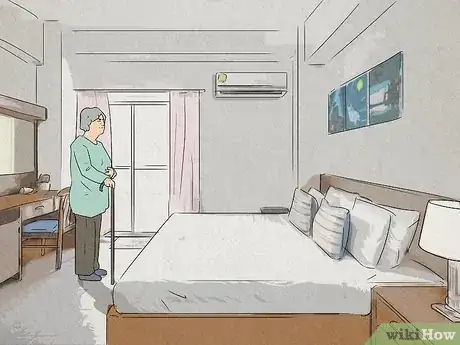




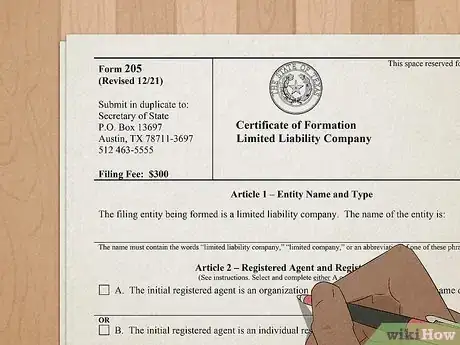



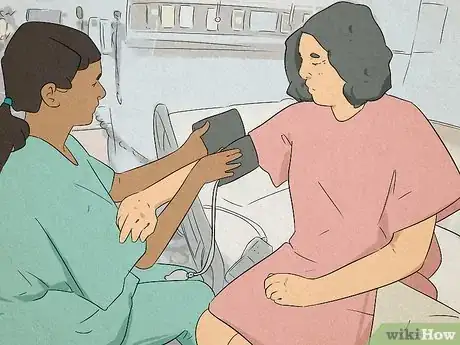
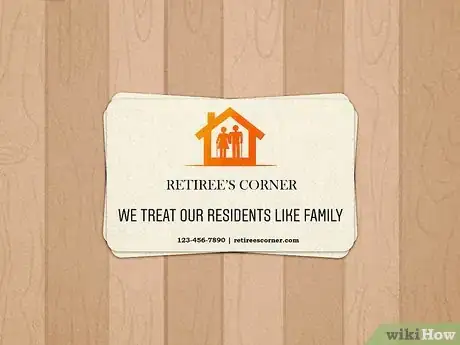
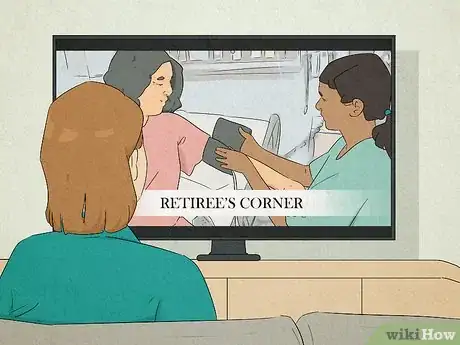


















































Medical Disclaimer
The content of this article is not intended to be a substitute for professional medical advice, examination, diagnosis, or treatment. You should always contact your doctor or other qualified healthcare professional before starting, changing, or stopping any kind of health treatment.
Read More...